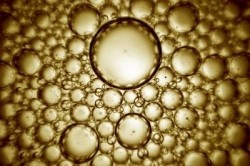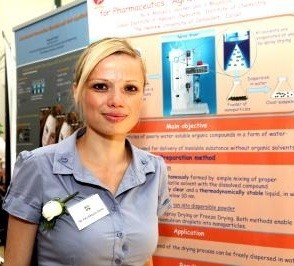Study finds it may take years for stabilized emulsions to reach equilibrium

The scientists studied the behavior of tiny particles at an interface between oil and water, and discovered the findings, published in Nature Materials (online) on December 4, could have important implications for the cosmetics among other chemical industries.
Strange happenings
"We were looking at what we thought would be a very simple phenomenon, and we found something very strange," says principal investigator Vinothan Manoharan, associate Professor of Chemical Engineering and Physics at the Harvard School of Engineering and Applied Sciences (SEAS).
"We knew that the particle would stick to the interface, and other researchers had assumed this event happened instantaneously. We actually found that the timescale for this process was months to years,” he adds.
The study looked into Pickering emulsions, which are emulsions that are stabilized by solid particles (for example colloidal silica) which adsorb onto the interface between the two phases; commonly used in cosmetics such as in sprays and creams.
When the oil and water in these types of emulsions are completely mixed and stable, the particles are said to be at equilibrium.
Manoharan and his colleagues used holography in the research to gain a three-dimensional view of microscopic polystyrene balls while they approached an interface between oil and water.
The researchers used light from a focused laser to gently push a particle toward the interface, hoping to watch it settle into its predicted equilibrium point, straddling the oil-water boundary.
An unexpected turn
However, none of the particles reached equilibrium during the experimental timeframe. Instead, they breached the interface quickly, but then slowed down more and more as they crossed into the oil.
"Our experiments only went on for a few minutes, but for the system to reach equilibrium would take at least weeks to months, and possibly years," explains lead author David Kaz.
According to the new research, the models currently used to predict and optimize these systems may be too simplistic, as scientists found that equilibrium may take longer to achieve than the time scale at which a product is used.
"If you're really stirring hard, maybe you can get the particles to reach equilibrium faster. But what we're saying is that the process matters,” adds co-author Michael Brenner, Glover Professor of Applied Mathematics and Applied Physics at SEAS.













